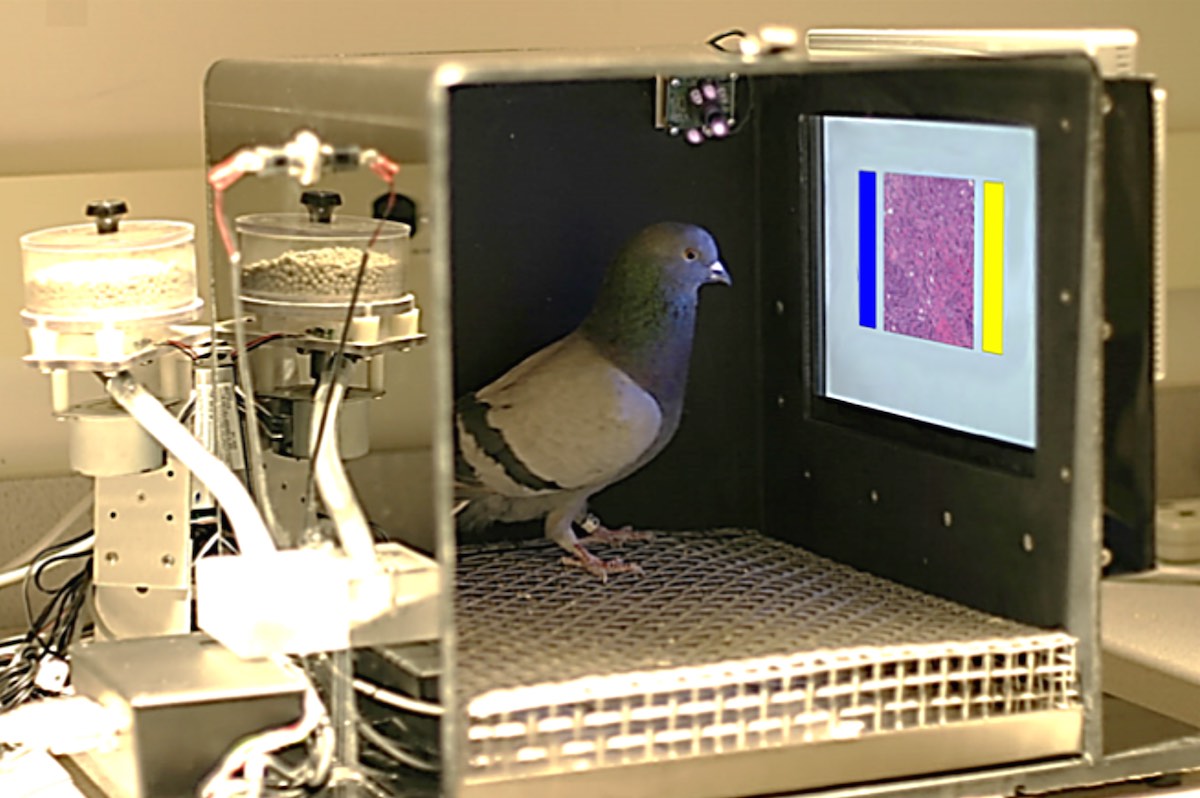Pigeons Learn to Spot Breast Cancer

Go ahead and call a pigeon a birdbrain. Just don’t challenge it to the tedious game of "Categorizing Tumors as Cancerous or Benign." The pigeon may well win.
Birds are known to have surprising smarts. In a new study, pigeons proved to be as adept as people at differentiating normal from cancerous breast tissue in mammogram images. The pigeons were shown images at various levels of magnification, and researchers gave them food rewards each time they picked a correct image.
"The birds were remarkably adept at discriminating between benign and malignant breast cancer slides at all magnifications, a task that can perplex inexperienced human observers, who typically require considerable training to attain mastery," study co-author Richard Levenson from the University of California, Davis, said in a statement. [5 Smartest Non-Primates ]
Pigeon brains are about the size of a large pea. But they work similarly to ours. Past research found pigeons can count aswell as monkeys. Another study showed pigeons recognize and remember human faces. And they have good long-term memories.
The pigeons' skills at parsing differences in medical imagery might be put to practical use. When researchers innovate the processing and analyzing of medical images, clinicians have to be trained (and paid) to monitor it all and provide feedback. The process can be mundane and expensive.
"Pigeons' sensitivity to diagnostically salient features in medical images suggests that they can provide reliable feedback on many variables at play in the production, manipulation and viewing of these diagnostically crucial tools, and can assist researchers and engineers as they continue to innovate," Levenson said.
The study was published yesterday (Nov. 18) in the journal PLOS ONE. Edward Wasserman at the University of Iowa and others contributed to the research.
Sign up for the Live Science daily newsletter now
Get the world’s most fascinating discoveries delivered straight to your inbox.
Follow the writer on Twitter @RobertRoyBritt. Follow Live Science @livescience, Facebook & Google+. Originally published on Live Science.
Robert is an independent health and science journalist and writer based in Phoenix, Arizona. He is a former editor-in-chief of Live Science with over 20 years of experience as a reporter and editor. He has worked on websites such as Space.com and Tom's Guide, and is a contributor on Medium, covering how we age and how to optimize the mind and body through time. He has a journalism degree from Humboldt State University in California.










